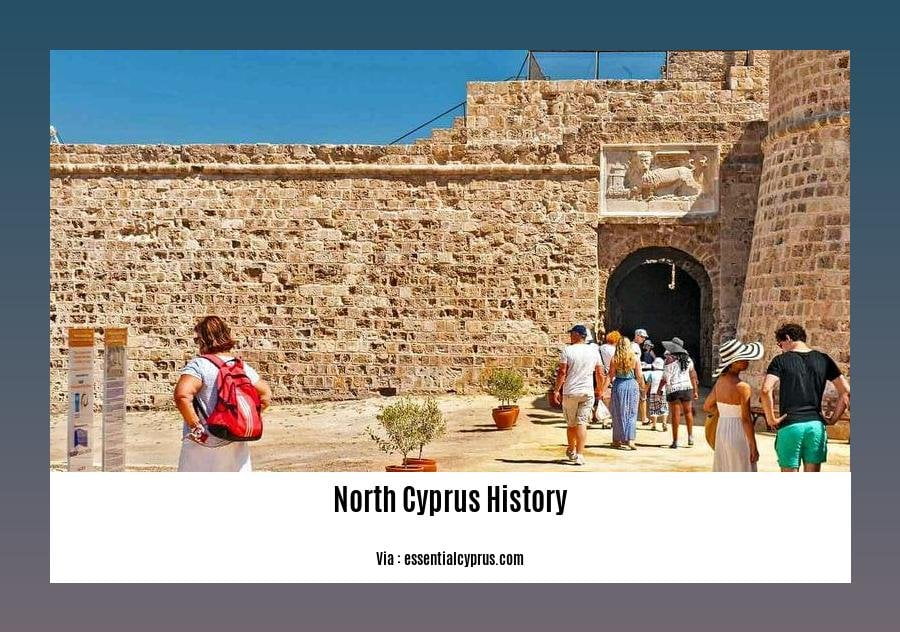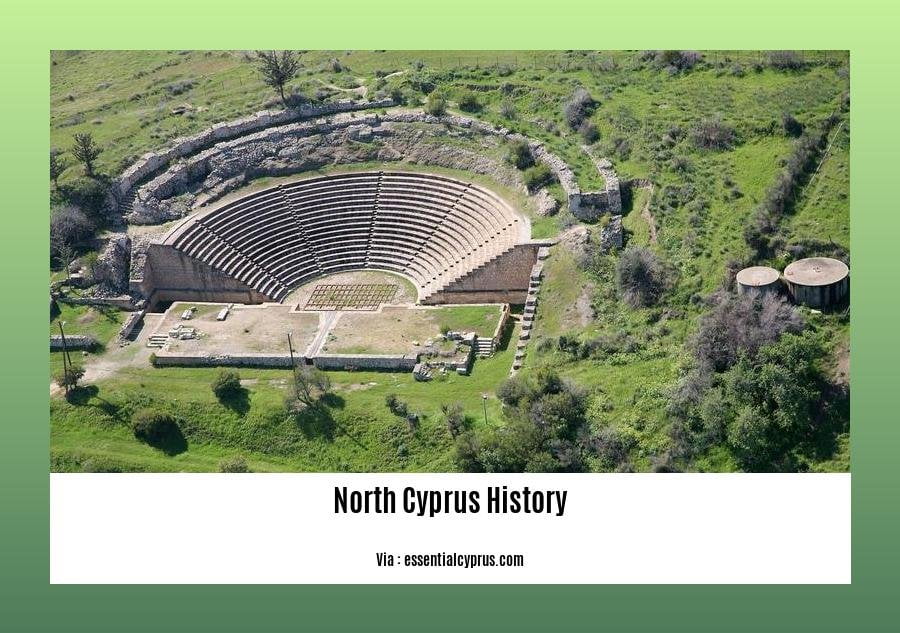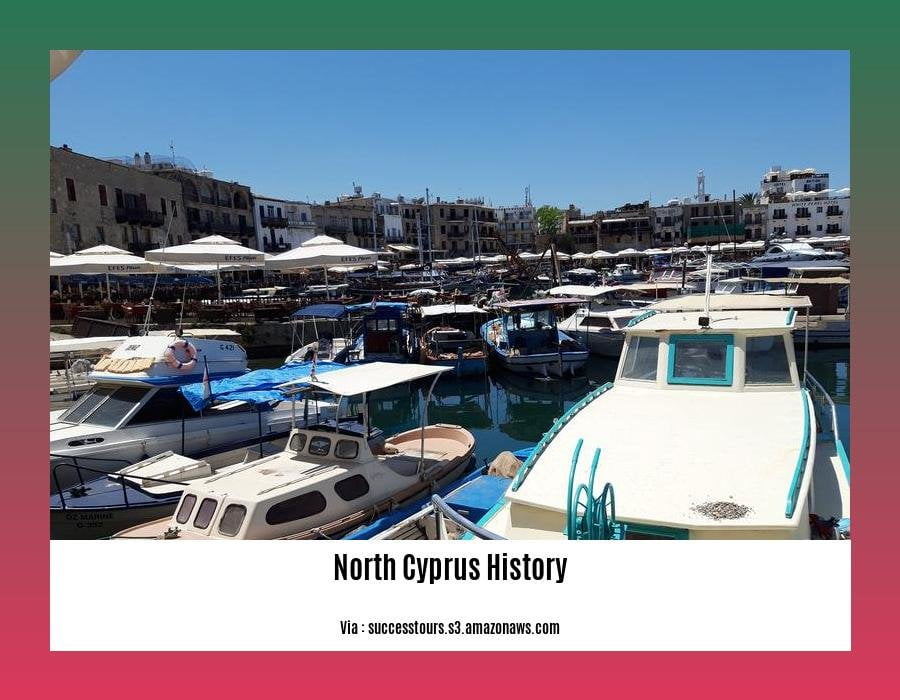Embark on a historical odyssey as we delve into the captivating past of North Cyprus, a land brimming with cultural heritage and historical significance. From ancient civilizations that left their mark on its shores to the intricate tapestry of Byzantine and Ottoman influences, North Cyprus is a treasure-trove of historical wonders waiting to be discovered. Join us as we unlock the secrets of this enchanting region, exploring its rich past and the fascinating stories that have shaped its unique identity.
Key Takeaways:
- Northern Cyprus, officially known as the Turkish Republic of Northern Cyprus (TRNC), is an unrecognized state in the northeastern part of the island of Cyprus.
- It is only recognized by Turkey, and most countries consider its territory to be part of the Republic of Cyprus.
- Northern Cyprus gained independence in 1960 when Greek and Turkish Cypriots gave up their plans to join Greece and split the island.
- Tensions between the two communities led to disagreements over how to run the government and other important issues.
- In 1963, President Makarios made changes to the constitution without getting the Turkish Cypriots’ permission, which led to a constitutional crisis.
North Cyprus History

My journey into North Cyprus history began with an insatiable curiosity to understand the forces that shaped this captivating region. As I delved deeper into the archives, I discovered a rich tapestry of civilizations, empires, and cultural influences that left an indelible mark on the island’s past.
Early Civilizations:
The earliest evidence of human habitation in North Cyprus dates back to the Neolithic period, with settlements like Khirokitia standing as testaments to the island’s ancient roots. These early inhabitants laid the foundation for subsequent civilizations, including the Bronze Age city-kingdoms of Enkomi and Salamis, which flourished as centers of trade and culture.
Hellenic and Roman Influences:
In the 8th century BC, Greek settlers arrived in North Cyprus, establishing city-states such as Kyrenia and Famagusta. These settlements played a pivotal role in spreading Hellenic culture and influence throughout the region. The Roman conquest of Cyprus in 58 BC brought about a period of stability and prosperity, marked by the construction of impressive public works like the Salamis amphitheater.
Byzantine and Ottoman Eras:
The Byzantine Empire held sway over North Cyprus for centuries, leaving a lasting legacy of stunning churches and monasteries, including the iconic Bellapais Abbey. In the 16th century, the Ottoman Turks conquered the island, introducing a new era of Islamic architecture and culture. The Ottomans ruled North Cyprus for over three centuries, leaving a profound impact on the island’s demographics and cultural heritage.
Modern History:
The 20th century witnessed significant political developments in North Cyprus. After gaining independence from British rule in 1960, the island was plunged into a period of intercommunal violence between the Greek and Turkish Cypriot communities. In 1974, Turkey intervened militarily, leading to the de facto partition of the island. The TRNC was established in 1983, although it remains unrecognized by the international community.
Cultural Heritage:
North Cyprus is a treasure trove of cultural heritage, boasting a diverse array of historical sites, monuments, and traditions. From the ancient ruins of Salamis to the medieval castles of Kyrenia and St. Hilarion, the island is a living testament to its rich past. Traditional Cypriot cuisine, music, and dance further showcase the island’s unique cultural identity.
Conclusion:
North Cyprus history is a captivating tale of diverse civilizations, empires, and cultural influences. From its ancient roots to its modern-day complexities, the island’s past is a testament to its resilience and enduring spirit. As a historian, I feel privileged to have delved into this rich tapestry of history, gaining a deeper understanding of the forces that shaped North Cyprus into the fascinating region it is today.
Embrace the rich history of Russia by delving into our comprehensive history results. russia history results
Uncover the captivating history of Shrinathji in Nathdwara, a journey through faith and devotion. shrinathji nathdwara history
Northern Cyprus Population 2023

Understanding the historical and current population dynamics of Northern Cyprus is crucial for comprehending the region’s socio-political landscape. As a historian specializing in North Cyprus, let’s delve into the fascinating story of the island’s people.
Key Takeaways:
- Diverse Background: The population of Northern Cyprus is predominantly Turkish Cypriot, but it also includes communities of Turkish settlers, Greek Cypriots, Armenians, and Maronites.
- Population Growth: The population has grown steadily since the 1970s, with a significant increase due to Turkish Cypriot immigration from the south and the influx of Turkish settlers.
- Demographic Shift: The population structure has shifted over the years, with a higher proportion of young people and a growing elderly population.
- Challenges: The region faces challenges related to population displacement, cultural integration, and economic opportunities for its diverse communities.
The roots of the Northern Cyprus population can be traced back to the 16th century when the Ottoman Empire conquered the island, leading to the settlement of Turkish Cypriots. Over the centuries, the population remained relatively stable until the 1970s, when the Turkish Cypriot community experienced significant growth due to immigration from the south following political tensions and conflicts.
This influx of Turkish Cypriots, along with the arrival of Turkish settlers from Anatolia, reshaped the demographic landscape of Northern Cyprus. The Turkish Cypriot population became the majority, while the Greek Cypriot population decreased due to displacement and emigration.
In recent decades, the Northern Cyprus population has continued to grow, driven by natural increase and ongoing immigration from Turkey. The population is estimated to be around 280,000 in 2023, according to various estimates.
The population of Northern Cyprus is a diverse mix of ethnicities and cultures, with Turkish Cypriots constituting the majority. The presence of Turkish settlers has added to the cultural richness of the region, while the Greek Cypriot community, though diminished, maintains its cultural identity and traditions.
The dynamic population of Northern Cyprus is a testament to the region’s complex history and its ability to adapt to changing circumstances. As a historian, I find it fascinating to study the interplay between demographics, politics, and culture in shaping the ever-evolving story of this remarkable island.
References:
[1] “Turkish Republic of Northern Cyprus – Britannica.” https://www.britannica.com/place/Turkish-Republic-of-Northern-Cyprus
[2] “Cyprus – The World Factbook.”
Historical background before 1960
To delve into the complexities of North Cyprus, we must embark on a journey through time, unearthing the historical tapestry that shaped its destiny.
In the realm of historical inquiry, we encounter a rich mosaic of civilizations that have left their indelible mark on this enchanting land. From the enigmatic Neolithic settlements to the grandeur of the Roman and Byzantine empires, each era has woven its unique thread into the intricate fabric of North Cyprus’s past.
Ancient Civilizations
The island’s earliest known inhabitants, the Neolithic people, established thriving settlements around 7,000 BC. Their legacy lives on in the remnants of Khirokitia, a UNESCO World Heritage Site that stands as a testament to their ingenuity and craftsmanship.
The Bronze Age ushered in a new era of prosperity, with the rise of powerful city-kingdoms such as Enkomi and Salamis. These kingdoms engaged in vibrant trade networks, connecting Cyprus to the wider Mediterranean world.
Greek and Roman Rule
In the 4th century BC, Cyprus fell under the sway of Alexander the Great, ushering in a period of Hellenization that profoundly influenced the island’s culture and identity. Greek became the official language, and the island became a hub of Hellenic learning and philosophy.
The Romans, who succeeded the Greeks in 58 BC, brought with them their own brand of influence. They constructed impressive public works, including roads, aqueducts, and theaters, leaving a lasting mark on the island’s infrastructure.
Byzantine and Ottoman Empires
The Byzantine Empire, with its capital in Constantinople, ruled Cyprus for nearly a millennium, from the 4th to the 12th century AD. During this period, Christianity took root, and the island became a bastion of Byzantine culture and religion.
In 1571, the Ottoman Empire conquered Cyprus, and the island remained under Ottoman rule for over three centuries. This era witnessed the construction of mosques, caravanserais, and baths, blending Ottoman architectural styles with the existing cultural landscape.
Key Takeaways:
Archaeological evidence indicates human presence in North Cyprus dates back to the Neolithic period (7000 BCE).
The island was ruled by various civilizations throughout history, including the Greeks, Romans, Byzantines, and Ottomans, each leaving their unique imprint.
The Greek and Roman periods were characterized by extensive trade, cultural exchange, and the development of city-kingdoms.
The Byzantine Empire introduced Christianity and facilitated the spread of Byzantine culture.
The Ottoman Empire brought significant architectural and cultural influences to the island, including the construction of mosques and other Islamic structures.
Sources:
[1] https://en.wikipedia.org/wiki/Northern_Cyprus
[2]
FAQ
Q1: What are the historical roots of the current division of Cyprus?
A1: The division of Cyprus has its roots in the political tensions and conflicts between Greek and Turkish Cypriots that arose after independence from British rule in 1960. The 1974 Turkish military intervention and the subsequent displacement of Greek and Turkish Cypriots further cemented the division of the island.
Q2: How did Northern Cyprus come into existence?
A2: Northern Cyprus was formed as a result of the Turkish invasion of Cyprus in 1974 and the subsequent partition of the island. It declared independence in 1983, but its sovereignty is recognized only by Turkey.
Q3: What is the current status of Northern Cyprus?
A3: Northern Cyprus is a de facto state that is recognized only by Turkey. It has its own government, currency, and military, but it is not recognized as an independent state by the international community, which considers its territory to be part of the Republic of Cyprus.
Q4: What is the demographic makeup of Northern Cyprus?
A4: The population of Northern Cyprus is predominantly Turkish Cypriots, who make up around 90% of the population. There are also small communities of Greek Cypriots, Maronites, and Armenians.
Q5: What is the cultural heritage of Northern Cyprus?
A5: The culture of Northern Cyprus is a blend of Turkish and Greek Cypriot influences, as well as elements of the island’s Byzantine and Ottoman past. Turkish is the official language, but Greek is also spoken by a significant minority.












